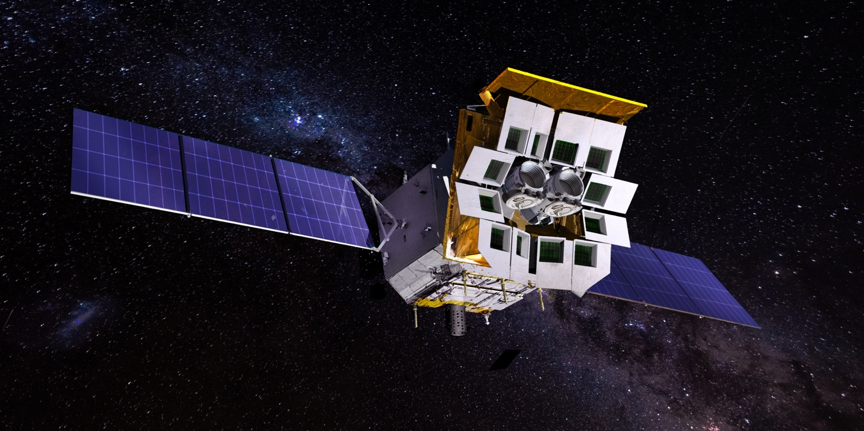In a significant stride for China’s space science initiatives, the Einstein Probe (EP) was successfully launched early Tuesday to unravel the mysteries of violent cosmic events.
In a significant stride for China’s space science initiatives, the Einstein Probe (EP) was successfully launched early Tuesday to unravel the mysteries of violent cosmic events. Riding atop a Long March 2C rocket, the 1,450-kilogram spacecraft embarked on its mission from the Xichang Satellite Launch Center in southwestern China at 2:03 a.m. (0703 UTC) on January 9.
The EP, a cornerstone of China’s strategic space science pursuits, is slated to spend a minimum of three years observing distant cosmic interactions such as tidal disruption events, supernovae, and capturing high-energy electromagnetic counterparts to gravitational wave occurrences.
Equipped with a state-of-the-art Wide-field X-ray Telescope (WXT), the EP aims to delve into the heart of celestial phenomena with the help of innovative “lobster eye” optics. The unique design, inspired by the eyes of lobsters, facilitates a broader and deeper view of X-ray events, surpassing previous capabilities.
The WXT, a collaborative effort that includes contributions from the European Space Agency (ESA), employs 12 lobster eye optics modules tested in a mission launched in 2022. This combined effort provides the EP with an expansive field of view spanning 3,600 square degrees.
Erik Kuulkers, ESA Project Scientist, emphasizes the EP’s strength in observing nearly the entire night sky within five hours, thanks to the lobster-eye technique. This capability allows the probe to swiftly capture unpredictable transient events in X-ray light, offering valuable insights into cosmic phenomena.
ESA’s involvement extends to supporting the testing and calibration of detectors and optical elements of the WXT. Additionally, ESA ground stations will play a crucial role in downloading data from the EP, contributing to the collaborative nature of the mission.
The EP, operating in a 600-kilometer altitude, 29-degree inclination orbit, is poised to unravel the enigmatic nature of events such as collisions between neutron stars, supernova explosions, and matter falling onto black holes. Its observations may shed light on the origin of gravitational wave impulses.
Autonomous follow-up capabilities are a notable feature of the EP, with the Follow-up X-ray Telescope (FXT) swiftly responding to X-ray events detected by the WXT. This responsive approach enables scientists to promptly study short-lived events, advancing the field of gravitational wave astronomy.
In recognition of ESA’s contributions, the agency will gain access to 10% of the data generated by EP. This data will be distributed among members of the European Einstein Probe Science Team, covering diverse interests from auroral emissions on Jupiter to the swallowing of matter by supermassive black holes in other galaxies.
China’s foray into dedicated space science missions began in 2015 with the DAMPE dark matter probe. The EP, approved in 2017 as part of the second phase of the Chinese Academy of Sciences’ Strategic Priority Program, marks another milestone in China’s pursuit of scientific exploration beyond Earth.
As China looks to the future, a third round of Strategic Priority Program missions is under consideration, including proposals for a Venus orbiter, a lunar small satellite constellation, exoplanet-hunting telescopes, an asteroid sample return, and more.
The launch of the EP represents the first China Aerospace Science and Technology Corp. (CASC) mission of 2024, preceded by the successful deployment of four Tianmu-1 GNSS radio occultation satellites on January 5.
Amidst the ambitious plans, China’s highest-profile mission for 2024 remains the Chang’e-6 lunar far side sample return mission. This complex undertaking necessitates the launch of the Queqiao-2 lunar relay satellite before the main mission takes center stage.
With the Einstein Probe now orbiting Earth, China’s pursuit of understanding the universe’s intricacies takes a leap forward, promising groundbreaking discoveries in the realm of cosmic phenomena.
